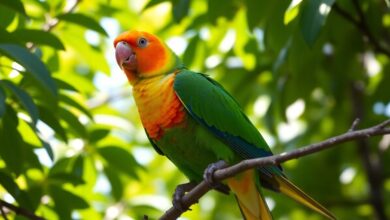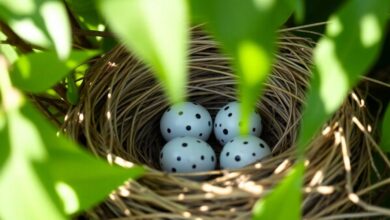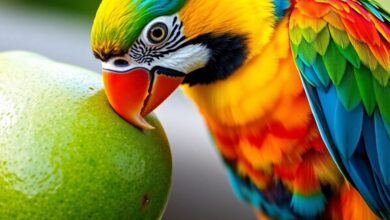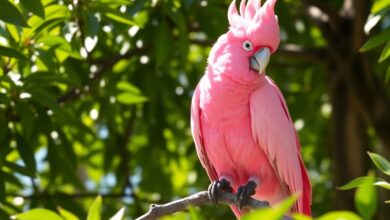How to Determine if Squirrels or Blue Jays Are Harming Garden Veggies
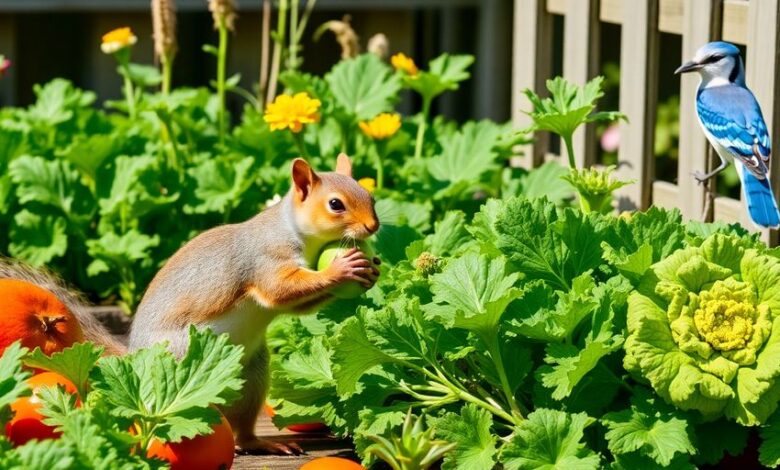
Gardening can be a rewarding hobby, but it can also come with challenges, especially when it comes to protecting your plants from hungry critters. Squirrels and blue jays are two common garden visitors that can cause damage to your vegetables. Understanding how to identify the signs of their activity can help you take the right steps to protect your garden. This guide will help you distinguish between the two and offer solutions to keep your veggies safe.
Key Takeaways
- Look for chewed vegetables to spot squirrel damage.
- Blue jays may leave droppings near plants they visit.
- Squirrels dig in the soil to hide their food.
- Blue jays often peck at ripe fruits and veggies.
- Monitoring your garden can help you identify patterns of damage.
Identifying Signs of Squirrel Damage
Squirrels can be sneaky little thieves in your garden. Look for clear signs of their mischief to determine if they are the culprits behind your damaged veggies.
Chewed Vegetables and Fruits
- Check for bite marks on your fruits and vegetables. Squirrels often leave behind half-eaten produce.
- Common targets include tomatoes, peppers, and berries.
- If you notice many chewed items, it’s likely squirrels are at work.
Disturbed Soil and Buried Nuts
- Squirrels love to dig! Look for small holes in the soil, which may indicate they are burying nuts.
- These holes can disrupt your plants and lead to further damage.
- If you see disturbed areas, it’s a sign of squirrel activity.
Gnawed Plant Stems and Leaves
- Inspect your plants for gnaw marks on stems and leaves. Squirrels may munch on tender shoots.
- This can stunt growth and lead to plant death.
- If you find gnawed areas, it’s a strong indicator of squirrel presence.
Squirrels are clever and persistent. Keeping an eye on your garden can help you catch them in the act and protect your plants!
Recognizing Blue Jay Activity in Your Garden
Pecked and Damaged Vegetables
Blue Jays can be quite destructive in gardens. They often peck at vegetables, leaving noticeable marks. Look for:
- Holes or deep scratches on the surface of fruits and vegetables.
- Missing parts of plants, especially tender shoots.
- Signs of digging around the base of plants.
Bird Droppings Near Plants
Another sign of Blue Jay activity is the presence of droppings. These can be found:
- Under trees or shrubs where they perch.
- Near damaged plants, indicating frequent visits.
- On garden furniture or pathways, which can help you track their movements.
Frequent Blue Jay Sightings
If you notice Blue Jays often in your garden, it’s a sign they may be causing trouble. Keep an eye out for:
- Their loud calls, which can be heard from a distance.
- Their bright blue feathers, making them easy to spot.
- Groups of Blue Jays, as they often travel in pairs or small flocks.
Monitoring these signs can help you determine if Blue Jays are affecting your garden.
Comparing Squirrel and Blue Jay Behavior

Feeding Habits of Squirrels
Squirrels are known for their opportunistic eating habits. They primarily consume:
- Nuts and seeds
- Fruits and vegetables
- Fungi and insects
Squirrels often bury nuts for later, which can lead to disturbed soil in gardens. Their foraging can be less efficient when competing with other animals, as studies show that nearby competitors can slow them down and make them more error-prone in finding food. This is evident in their behavior when they are around other animals.
Feeding Habits of Blue Jays
Blue Jays are also opportunistic feeders, but their diet is more varied. They eat:
- Nuts and seeds
- Fruits
- Insects and small animals
Interestingly, Blue Jays are known to be predators as well. They can attack smaller birds and their nests, which can be alarming for gardeners. Their aggressive behavior can lead to significant impacts on local bird populations.
Activity Patterns During the Day
Both squirrels and Blue Jays are most active during the day. However, their activity patterns differ:
- Squirrels tend to be busy in the early morning and late afternoon, often seen foraging for food.
- Blue Jays are more vocal and can be seen throughout the day, especially when they are feeding or defending their territory.
Understanding the behaviors of these animals can help you protect your garden. Monitoring their activity is key to determining which one is causing damage.
Preventative Measures for Squirrel Damage

Using Physical Barriers
To keep squirrels out of your garden, installing physical barriers is one of the most effective methods. Here are some options:
- Fencing: Build a sturdy fence that is at least 4 feet high. Make sure it has a fine mesh to prevent squirrels from slipping through.
- Netting: Use bird netting over your plants to protect them from being accessed by squirrels.
- Baffles: Consider using baffles on bird feeders to prevent squirrels from reaching the food. This is a great way to keep them away from your garden.
Natural Repellents and Deterrents
Squirrels have sensitive noses, so using strong scents can help deter them. Here are some effective options:
- Citrus peels: Scatter citrus peels around your garden.
- Coffee grounds: Sprinkle used coffee grounds in your garden beds.
- Pepper sprays: Use hot pepper sprays on your plants to make them less appealing.
Creating Squirrel-Proof Garden Structures
Building structures that are hard for squirrels to access can protect your veggies. Consider these ideas:
- Raised beds: Elevate your garden beds to make it harder for squirrels to reach.
- Covered planters: Use planters with lids or covers to keep squirrels out.
- Squirrel-proof bird feeders: Invest in a squirrel-proof bird feeder to keep them distracted and away from your garden.
Keeping squirrels at bay requires a mix of strategies. By using barriers, repellents, and smart garden designs, you can protect your precious veggies from these pesky critters!
Preventing Blue Jay Damage
Scare Tactics and Deterrents
To keep Blue Jays away from your garden, consider using various scare tactics. Here are some effective methods:
- Reflective objects: Hang shiny items like aluminum foil or old CDs around your garden.
- Predator decoys: Place fake owls or hawks to create a sense of danger.
- Noise makers: Use wind chimes or other noise-making devices to startle them.
Providing Alternative Food Sources
Another way to deter Blue Jays is by offering them alternative food sources. This can help redirect their attention away from your garden:
- Eggshells: Crushed eggshells provide calcium and can be placed near feeders.
- Sunflower seeds: These are a favorite for Blue Jays and can be offered in a separate area.
- Dried fruits: Offering raisins or dried figs can also attract them away from your veggies.
Protecting Vulnerable Plants
To safeguard your plants from Blue Jays, consider these protective measures:
- Netting: Use bird netting to cover your most vulnerable plants.
- Row covers: Lightweight fabric can shield young plants from pecking.
- Fencing: A low fence can deter Blue Jays from entering your garden.
Remember, while Blue Jays are beautiful birds, they can be quite destructive. Taking proactive steps can help protect your garden from their antics!
Monitoring and Documenting Garden Activity
Keeping an eye on your garden can help you spot any trouble early. Tracking the activity of animals can save your veggies from damage. Here are some effective ways to monitor what’s happening in your garden:
Setting Up Garden Cameras
- Install motion-activated cameras to capture images of any critters visiting your garden.
- Choose cameras that can work in low light to catch nighttime visitors.
- Review footage regularly to identify patterns in animal behavior.
Keeping a Garden Journal
- Write down daily observations about plant health and any signs of damage.
- Note the time of day when you see animals, which can help you understand their habits.
- Include weather conditions, as they can affect animal activity.
Identifying Patterns and Trends
- Look for repeated signs of damage or animal visits over time.
- Create a simple table to track the types of damage and the suspected animal responsible:
| Date | Damage Type | Suspected Animal |
|---|---|---|
| 2023-10-01 | Chewed tomatoes | Squirrel |
| 2023-10-02 | Pecked peppers | Blue Jay |
| 2023-10-03 | Disturbed soil | Squirrel |
Monitoring your garden can help you understand which animals are causing problems. This knowledge is key to protecting your plants and ensuring a healthy harvest.
By using these methods, you can effectively monitor your garden and take action when needed. Stay vigilant, and your veggies will thank you!
Seeking Professional Help

When dealing with potential damage to your garden, sometimes it’s best to seek expert advice. Here are some situations where professional help may be necessary:
When to Call a Pest Control Expert
- If you notice significant damage to your plants that you cannot identify.
- When the problem persists despite your efforts to deter the animals.
- If you suspect a larger infestation that could harm your garden.
Consulting a Wildlife Specialist
- Wildlife specialists can provide insights into animal behavior and effective deterrents.
- They can help identify the specific species causing damage.
- Specialists may offer solutions that are safe for both your garden and the wildlife.
Community Resources and Support
- Local gardening clubs often have members with experience in dealing with wildlife issues.
- Many communities have wildlife rescue organizations that can provide guidance.
- Online forums and social media groups can be great places to share experiences and get advice.
Remember, taking action early can prevent further damage to your garden. Don’t hesitate to reach out for help if you feel overwhelmed!
Final Thoughts
In conclusion, figuring out whether squirrels or blue jays are the ones damaging your garden can be tricky. Both animals can cause problems, but they do it in different ways. Squirrels often dig up plants and eat the seeds, while blue jays might peck at fruits and vegetables. To protect your garden, you can try various methods like using barriers or natural repellents. Observing their behavior closely will help you understand which one is causing the most trouble. Remember, it’s important to find a balance that keeps your garden safe while respecting the wildlife around you.
Frequently Asked Questions
What are the signs that squirrels are damaging my garden?
Look for chewed vegetables, disturbed soil, and gnawed plant stems. These are clear signs that squirrels might be causing trouble.
How can I tell if Blue Jays are affecting my plants?
If you see pecked vegetables, bird droppings near your plants, or notice Blue Jays frequently visiting, they might be the culprits.
What do squirrels usually eat in gardens?
Squirrels love nuts, seeds, fruits, and vegetables. They might dig up your plants looking for food.
Are Blue Jays known to eat other birds?
Yes, Blue Jays are omnivores and can eat small birds, especially if they have a chance.
What can I do to keep squirrels away from my garden?
You can use physical barriers like fences, natural repellents, or create squirrel-proof structures to protect your plants.
How can I discourage Blue Jays from visiting my garden?
Consider using scare tactics, providing alternative food sources away from your garden, or protecting your vulnerable plants with netting.


